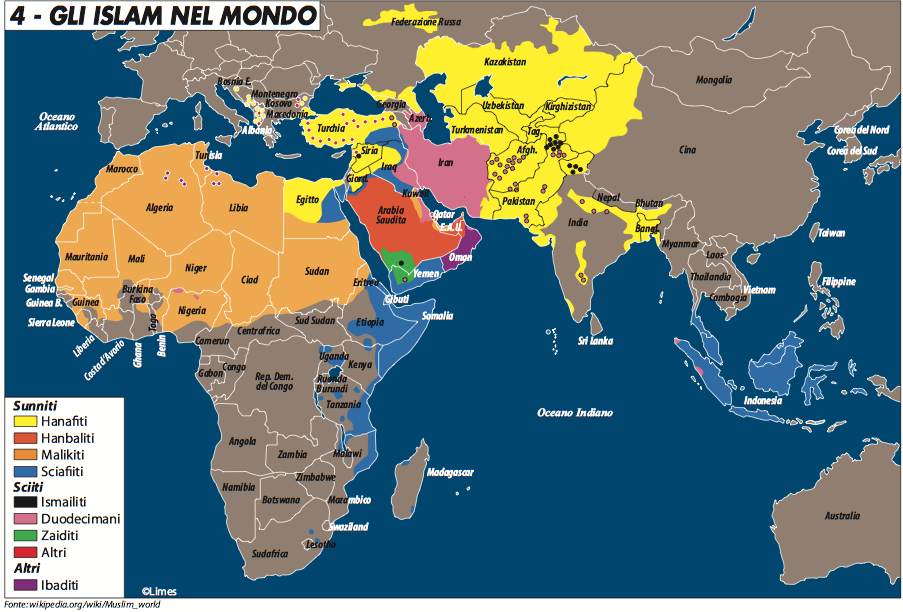
Blog di letteratura, storia, arte e critica cinematografica e televisiva. I racconti e i romanzi contenuti in questo blog sono opere di fantasia o di fanfiction. Gli eventi narrati e i personaggi descritti, esclusi quelli di rilevanza storica, sono del tutto immaginari. Ogni riferimento o somiglianza a persone o cose esistenti o esistite, o a fatti realmente accaduti, è da considerarsi puramente casuale. Gli elementi di fanfiction riguardano narrazioni di autori molto noti e ampiamente citati.
venerdì 15 luglio 2016
Albero genealogico e discendenza di Aegon V Targaryen

Da sinistra a destra: principe Duncan Targaryen, re Aegon V Targaryen, futuro re Jaehaerys II Targaryen, principe Daeron Targaryen

Re Aegon V
Principe Duncan il Giovane
Principe Daeron Targaryen
Jaehaerys II Targaryen
Melissa Blackwood and Barba Bracken with their sons Brynden Bloodraven Rivers and Aegor Bittersteel Rivers.

Melissa was the 6th mistress of King Aegon IV Targaryen (the Unworthy), replacing Lady Barba Bracken, who had been sent from court in disgrace. Over her 5 years as Aegon's mistress, Melissa gave birth to 2 girls and a boy, Brynden Rivers, who would maintain close relations at court due to the fact that his mother had been well loved during her time there, even after her dismissal.
In response to Aegon taking Melissa for a mistress, Lord Bracken and his daughter Barba groomed his younger daughter Bethany to replace Melissa. In 177 AC, King Aegon visited them to see his bastard son by Barba, Aegor Rivers, and Bethany caught his eye and returned with him to King's Landing.
Bloodraven and Bittersteel's rivalry ran deep. It didn't help that both were madly in love with Shiera Seastar, the last of the Great Bastards, renowned Targaryen beauty and seductress, a great reader who spoke many languages and practiced the dark arts.
Art: ProKrik

Aegor Rivers "Bittersteel" Targaryen

Bittersteel at the Redgrass Field, by Michael Hallstein.
Bittersteel sided with Daemon Blackfyre in the First Blackfyre Rebellion, commanding the right of Daemon's host during the Battle of the Redgrass Field. Upon Daemon's death, he rallied his troops and charged Bloodraven's archers, the Raven's Teeth, taking out his half-brother's eye in the process.
At the end of the rebellion, having recovered Blackfyre, the Targaryen family sword, Bittersteel fled Westeros with Daemon's remaining sons to the Free City of Tyrosh, where he joined the Second Sons, a sellsword company, for a year.
He then founded the Golden Company, the largest, most famous and most expensive mercenary company in the Free Cities. Despite the notorious unreliability of sellswords, the Golden Company was reputed to have never broken a contract. Their motto was "Our word is good as gold", while their war cry, "Beneath the gold, the bitter steel", pays homage to their founder.
Brynden Rivers "Bloodraven" Targaryen

Lord Commander Brynden Rivers by Michael Hallstein.
First portrait I've ever seen of Bloodraven as LC of the Night's Watch.

Brynden Rivers Bloodraven Targaryen, the Three-Eyed Crow by Gerky-Art.

Brynden was the bastard son of King Aegon IV Targaryen, and had.a sinister reputation as a sorcerer and spymaster who effectively ruled the kingdom "with spies and spells". A popular riddle asked was, "How many eyes does Lord Bloodraven have? A thousand eyes, and one"
Brynden was an albino, with milk white skin, long white hair, and red eyes. On the right side of his face he had a red winestain birthmark that extended from his throat up to his right cheek from which he earned his name "bloodraven", as the birth mark was said to look somewhat like a raven drawn in blood.
Brynden lost an eye during the First Blackfyre Rebellion and rarely covered the empty socket with a patch or with his hair brushed forward, prefering to display his scar and empty socket to the world.
When Maester Aemon sailed for the Wall in 233AC, he was escorted by King Aegon V's friend Ser Duncan the Tall of the Kingsguard, accompanied by an "honor guard" of recruits for the Night's Watch, and Brynden Rivers was among them.
Brynden rose to the position of Lord Commander of the Night's Watch in 239 AC. However, he disappeared while ranging beyond the Wall 13 years later.
Back to the "present", Brynden is still alive as the three-eyed crow who haunts Bran's dreams, the last greenseer living with children of the forest in a cave beyond the Wall.
He's now a pale, skeletal man in rotted, black clothing in a weirwood throne of tangled roots. His fine, white hair is long enough to reach the earthen floor. Weirwood roots surround the man and grow through his body, including his leg and his empty eye socket.
His voice has become slow and dry, as if he forgot how to speak.
Daemon Blackfire Targaryen vs Rhaegar Targaryen, Prince of Dragonstone

Il mondo islamico e le sue correnti



Scuole giuridiche e teologiche
| Lo stesso argomento in dettaglio: Fiqh, Kalam e Madhhab. |
Se ognuno è sacerdote di sé stesso e responsabile dei suoi errori, il discrimine fra quanto è considerato consono all'Islam e quanto gli è contrario potrà scaturire solo dall'approfondito dibattito fra esperti "dottori" (ʿulamāʾ) che abbiano compiuto i necessari studi all'interno di strutture d'insegnamento religioso, la cui affidabilità sia riconosciuta senza riserve.
Esiste in materia un pluralismo di scuole giuridiche (madhhab) e teologiche, con numerose diverse interpretazioni di una stessa fattispecie giuridica (salvo, ovviamente, l'impossibilità di discutere gli assetti dogmatici dell'Islam, che non sono contestabili, per non incorrere automaticamente nella condanna di kufra - infedeltà massima - che fa conseguire la qualifica di "eretico" - kāfir, pl. kāfirūn). Tutte le cosiddette "scienze religiose" (ʿulūm dīniyya) tendono alla formazione di un consenso maggioritario (ijmāʿ) circa il modo d'interpretare il disposto coranico e sciaraitico. Tale consenso potrà comunque mutare nel tempo, in caso si esprima in tal senso una nuova maggioranza. Si parla di una vera e propria "polverizzazione" dei modi di giudicare della umma, divisa in numerose scuole teologiche e giuridiche, alle quali potrebbe aggiungere anche l'enorme differenziato panorama costituito dalle confraternite mistiche, tanto che qualcuno ritiene che, più che parlare di Islam, si dovrebbe parlare di "pluralità di Islam" (Islams in inglese).
Gruppi religiosi
| Lo stesso argomento in dettaglio: Sunnismo e Sciismo. |
I musulmani vengono differenziati in:
- Sunniti, che costituiscono tra l'87 e il 90% del numero complessivo dei devoti musulmani,[67]) sono maggioritari in quasi tutti i paesi islamici (tranne l'Iran, l'Azerbaigian, l'Iraq, il Libano, il Bahrein e l'Oman).
- Sciiti, che costituiscono la minoranza più consistente (circa il 10-13%). Essi si richiamano all'eredità di ʿAlī ibn Abī Ṭālib, cugino e genero di Muḥammad, e dei suoi figli al-Ḥasan b. ʿAlī e, più in particolare, di al-Ḥusayn b. ʿAlī. Dominante in Iran, lo sciismo è maggioritario in Azerbaigian, in Iraq, in Libano e inBahrein. Gli sciiti si dividono a loro volta in:
- un gruppo maggioritario (duodecimano, o imamita o ithnaʿashariyya),
- un gruppo minoritario (ismailita, o settimano o sabaʿiyya). Gruppi di Ismaeliti sono presenti in India,
- un gruppo più esiguo, detto "zaydita", prevalente in Yemen, teorizza la possibilità che a guidare legittimamente la Comunità islamica (Umma) possa essere qualsiasi discendente del Profeta purché questi agisca concretamente contro i musulmani reprobi e usurpatori del califfato, con un deciso impegno militante che non lasci spazio a un comodo quietismo limitato a un'attività puramente teoretica.
- Kharigiti, un tempo abbastanza diffusi, specialmente in Nordafrica, Iraq e Penisola araba, si dividevano in numerosi sottogruppi - sufriti, Azraqiti, Najadāt,Nukkariti - di cui sussistono solo gli:
Di derivazione islamica, ma considerati eterodossi, sono invece:
- Gli Alawiti, appartenenti a una setta minoritaria d'ispirazione sciita ma con forti tratti gnosticheggianti. Esprime il gruppo dirigente in Siria fin dall'epoca del Presidente Ḥāfiẓ al-Asad.
- I Drusi, di originaria ispirazione ismailita ma presto abbondantemente diversificatisi, sorti in età fatimide all'epoca dell'Imàm-califfo al-Ḥākim. Sono presenti in Libano, nella regione montagnosa dello Shūf, come pure in Siria (Golan, Gebel Druso) e in Israele.
- I Bahāʾī, a loro volta gemmati dal Babismo, costretti dalla Rivoluzione islamica dell'Iran a rifugiarsi in India e in Occidente (soprattutto Canada e Stati Uniti d'America). I suoi fedeli pretendono di costituire una religione "interamente nuova"[68] e non quindi una eterodossia dell'Islam.
- Gli Aleviti appartenenti a una setta minoritaria d'ispirazione sciita duodecimana, ma con forti aspetti prossimi allo gnosticismo. Sono presenti soprattutto in Turchia dove rappresentano almeno il 15% della popolazione.
- Gli Ahl-e Ḥaqq, presenti in Iraq e in Iran, di ispirazione sciita ma marcatamente eterodossa.
- L'Aḥmadiyya di Qādyān (India settentrionale) e Lahore (Pakistan), fondata da Mirza Ghulam Ahmad.
- I Sikh, presenti in India, nati dopo Muḥammad, che ritengono validi alcuni punti del credo islamico (tra cui il monoteismo). Sono considerati tuttavia appartenenti a una religione completamente distaccata dall'Islam, e non una sua eterodossia.
- Gli yazidi, il cui sincretismo include anche alcuni elementi dell'Islam, pur discostandosene sostanziosamente.
- La "Nation of Islam" presente negli Stati Uniti, di ispirazione sunnita ma marcatamente eterodossa, tanto da essere considerata dagli storici delle religioni come appartenente a una religione ormai completamente distaccata dall'Islam, e non una sua generica eterodossia.

Iscriviti a:
Commenti (Atom)
















